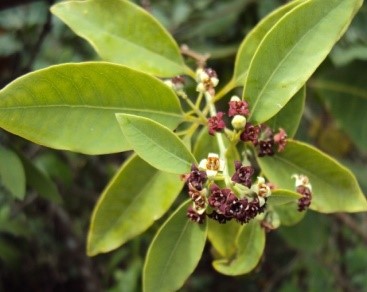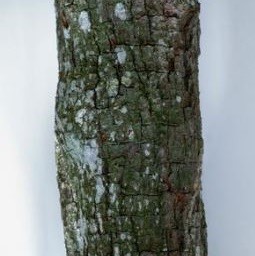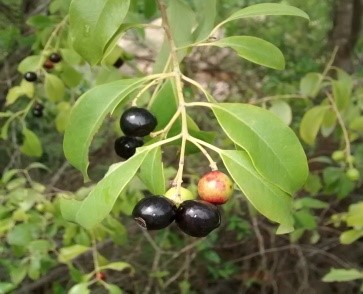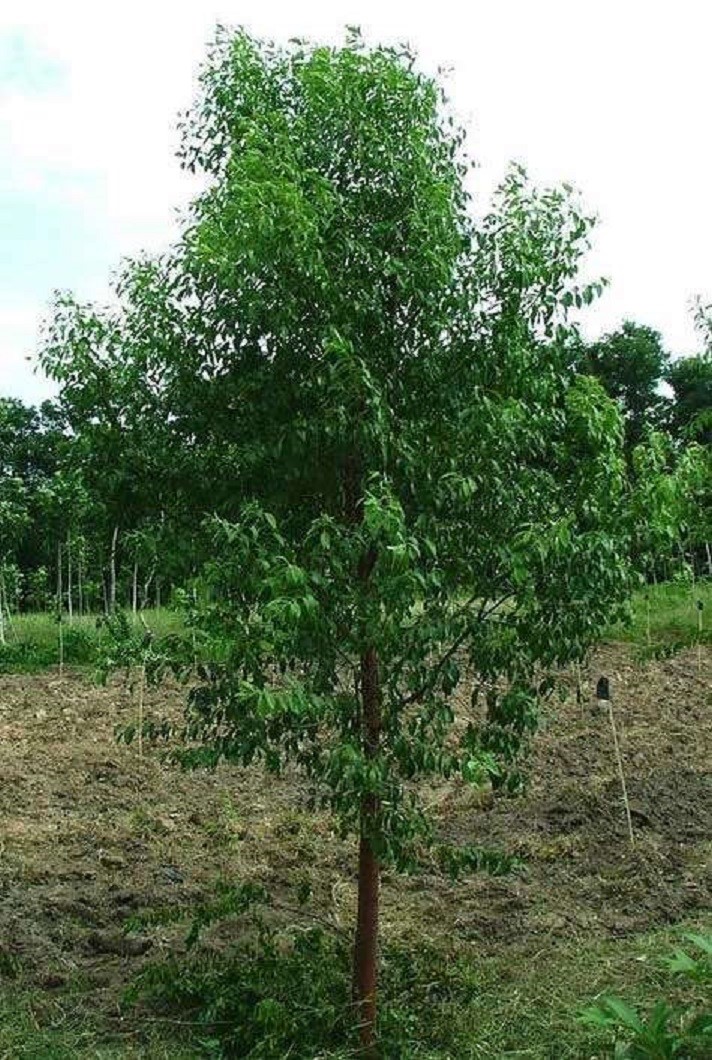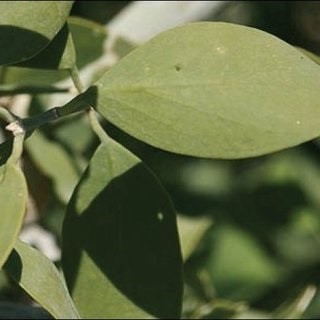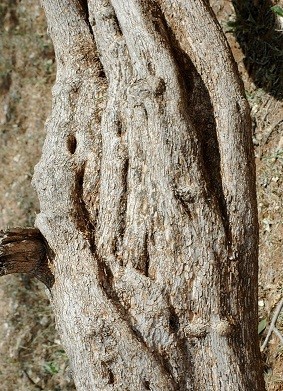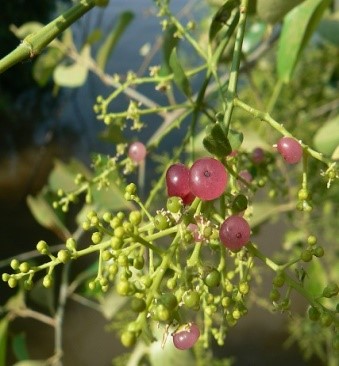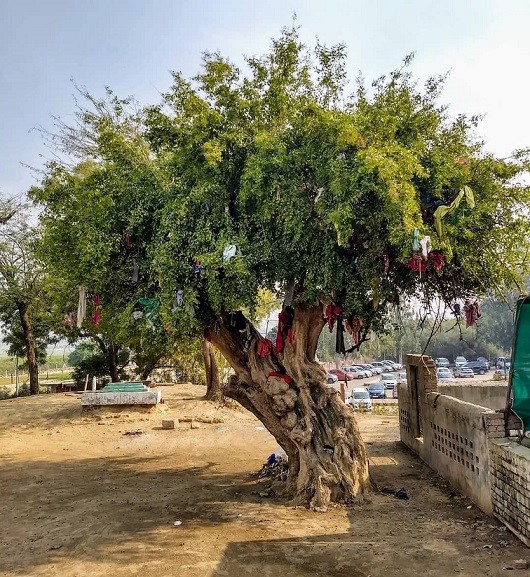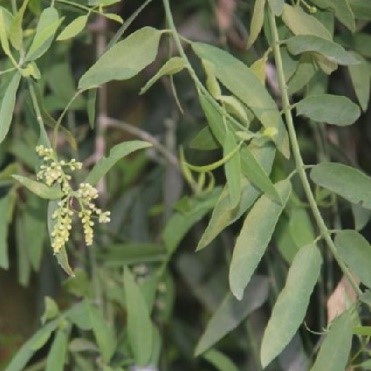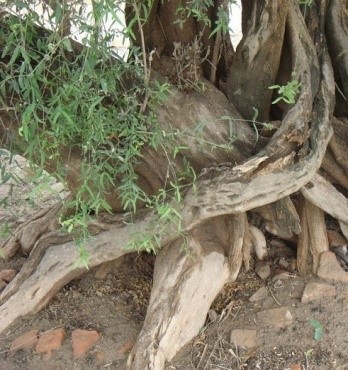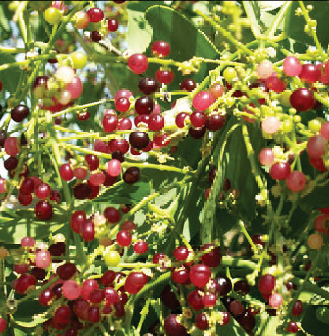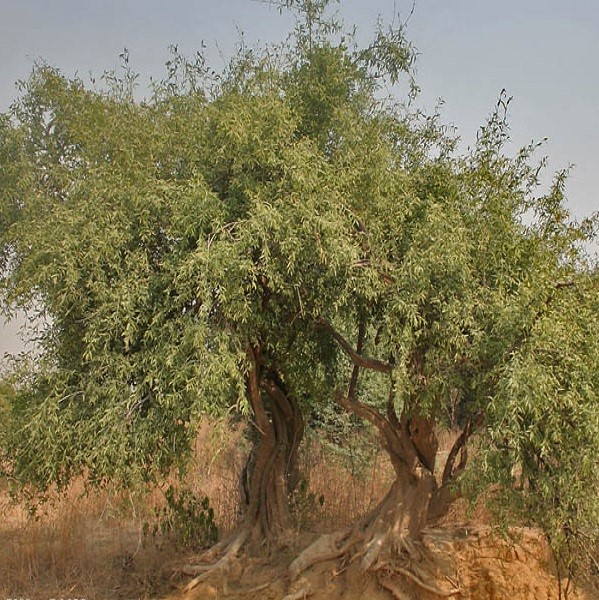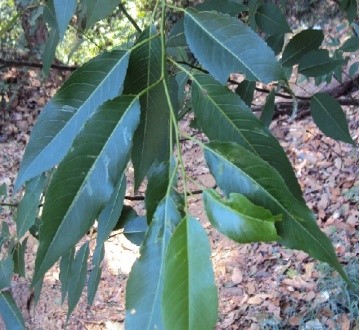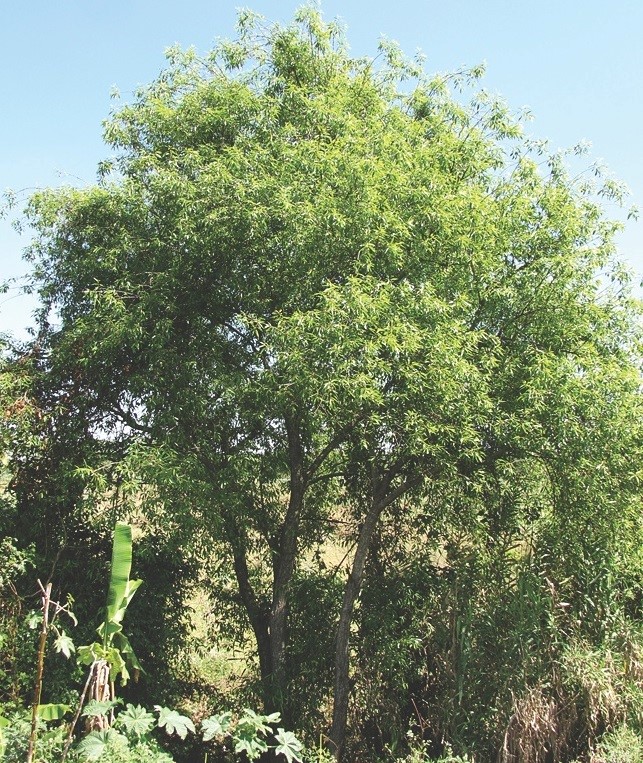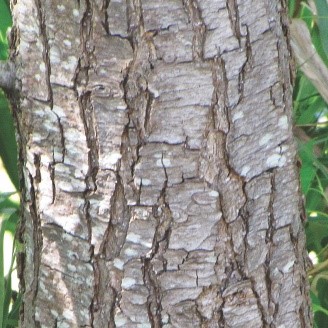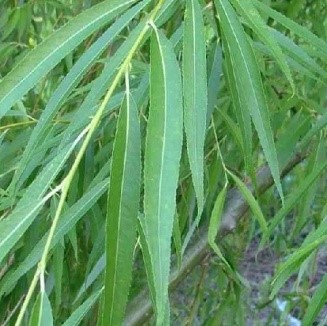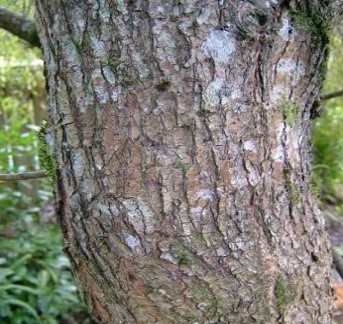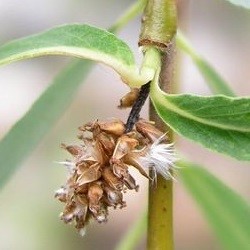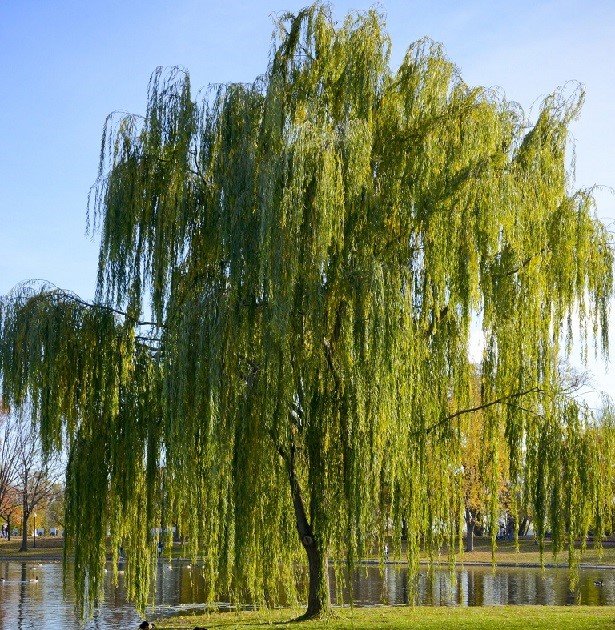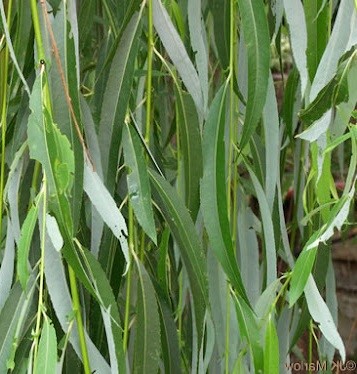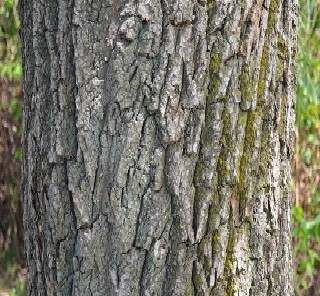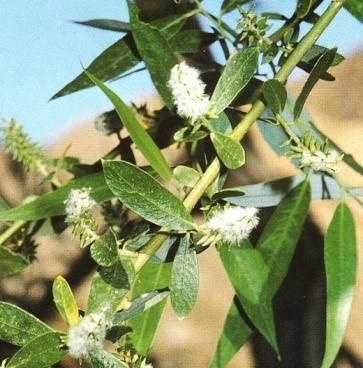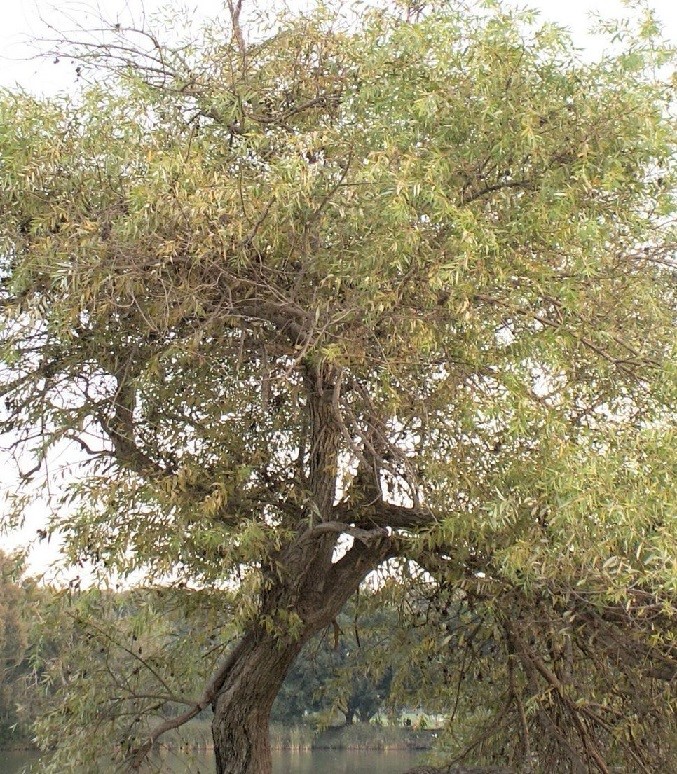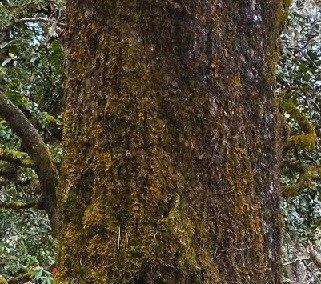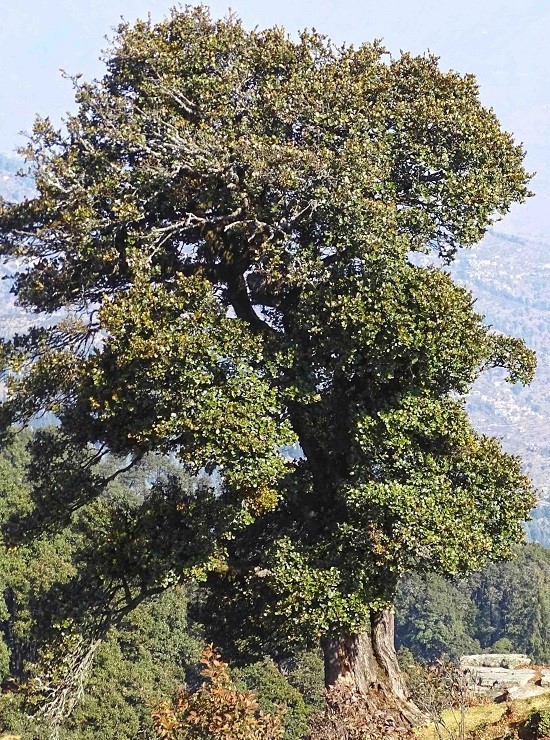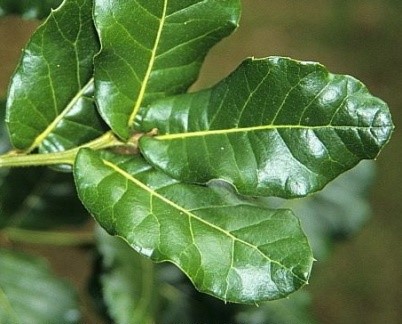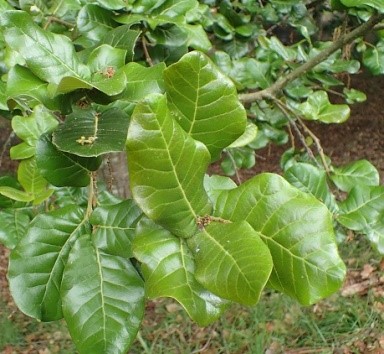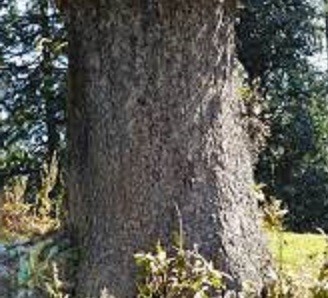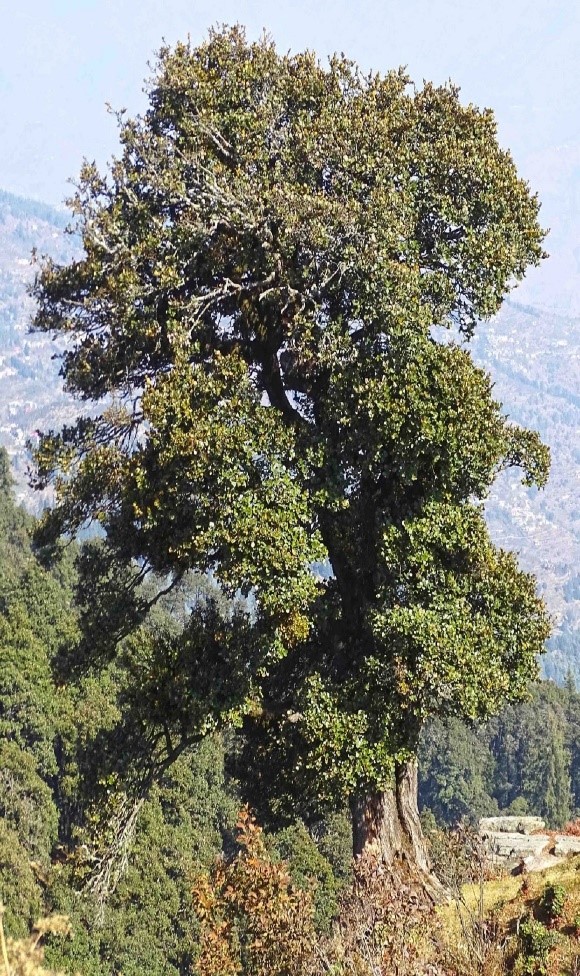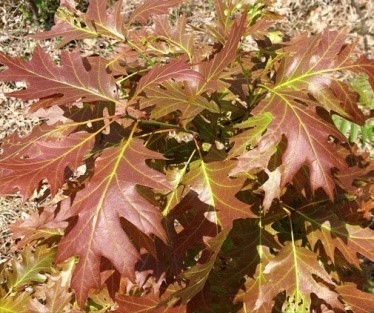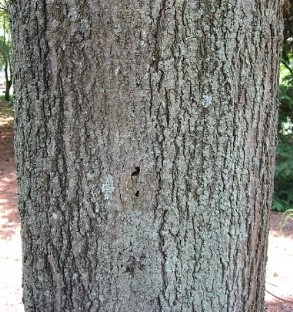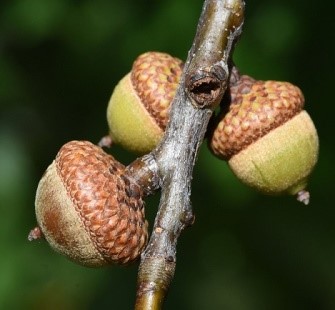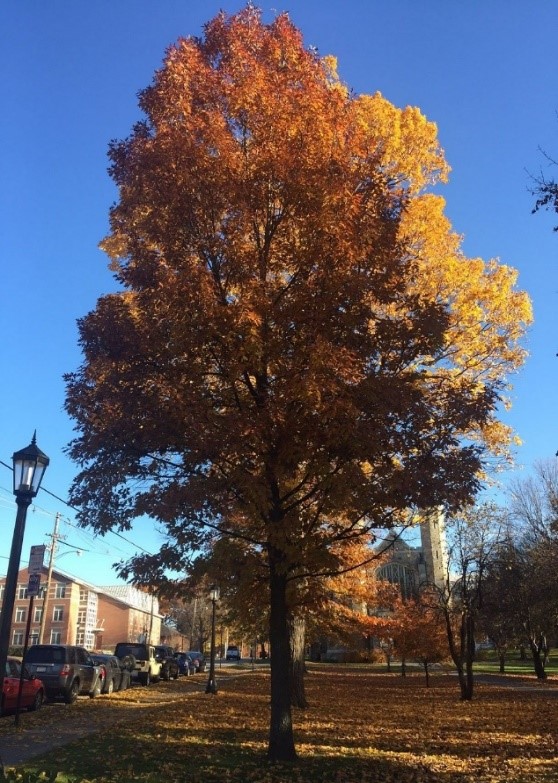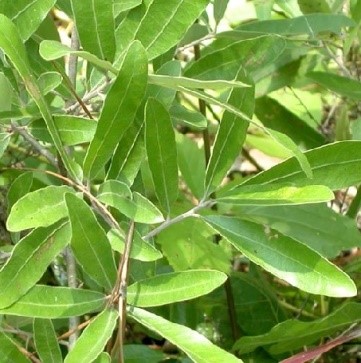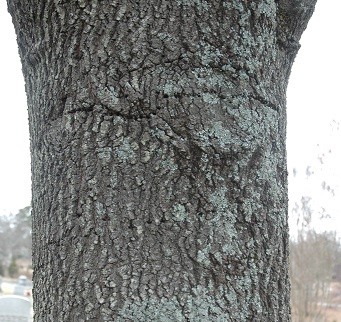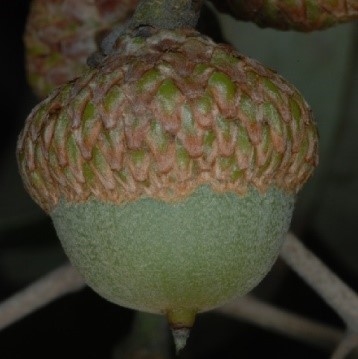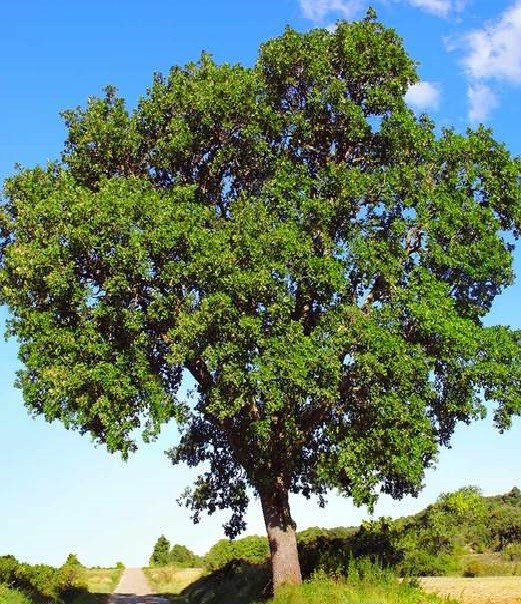Trees of Pakistan
Santalum album L.
Family Name: Santalaceae
Local Name : Chandan
English Name : Sandalwood
Description : This tree is the evergreen small sized or shrub tree having height of about 5 to 10m. They may live to one hundred years of age. The tree is variable in habit, usually upright to sprawling, and may intertwine with other species. The reddish or brown bark can be almost black and is smooth in young trees, becoming cracked with a red reveal. Leaves are light green, shiny, simple, estipulate and opposite and they are 4 to 9 cm long and 1.5 to 4 cm wide. The petiole is up to 12 to 18 mm long. Flowers are small and bisexual and reddish purple in colour. Single seeded Fruit is a drupe, reddish purple turning black, and it is 1 to 1.5 cm in diameter.
Salvadora persica
Family Name: Salvadoraceae
Local Name : Meswak
English Name : Toothbrush tree
Description : This plant is a large, well-branched evergreen shrub or small tree with the height of 5 to 7 meters, having soft whitish yellow wood, its bark is of old stems rugose, branches are numerous. Leaves are somewhat fleshy and 3 to 7 cm long by 2 to 4 cm broad in size. The flowers are greenish yellow in color, in axillary and terminal compound lax panicles of about 4 to 13 cm long. Calyx is 1.2 mm long, glabrous and has rounded lobes. Corolla is very thin, and it is about 3 mm long, deeply cleft, persistent, lobes are 2.5 mm long, oblong, obtuse, and much reflexed. Stamens are shorter than corolla. Drupe is 3 mm in diameter, globose, smooth and becomes red when ripe. The flowers of the plant are small and fragranced.
Salvadora oleoides Dene.
Family Name: Salvadoraceae
Local Name : Van, Pilu
English Name : Salvadora
Description : A large evergreen shrub or tree, sometimes growing into a rather large tree. The leaves are 3.8 to 7.8 cm long. Bark is grey and slightly rough. The flowers are 2.35 cm across. The fruit is a drupe 5 cm in diameter, sub-sessile, globose and yellow in color when ripe. Flowers occur in March and April. The seed matures in summer. It is reproduced from seed. Poly bag raised 1-year old seedlings can be successfully planted out. The tree is currently being heavily lopped for fodder and fuel. Efforts should be made to initiate a planting program as well as a protection program for existing individuals and groups of individuals. The tree would become extinct if new plantations are not raised in its natural ecological zone i.e. deserts of Thal, Cholistan and Tharparkar. It grows about 6
Salix tetrasperma Roxb.
Family Name: Salicaceae
Local Name : Bed-i-Laila
English Name : Indian Willow
Description : A small to medium sized, deciduous tree, 6 to 12 m tall with diameters of 0.4 to 1.0 m. The trunk is erect, with a large crown. The leaves are simple, 5 to 20 cm long. It is dioecious. The male and female catkins are borne on leafy shoots. The male catkins are 2.5 to 12.5 cm long, while the female catkins are 2.5 to 12.5 cm long. Flowering and seed production occurs between February and May. It does coppice. Rust and powdery mildew may cause damage to the foliage. It is reproduced both from seed and by vegetative means. Seed are small and wind disseminated. However most trees result from root suckers or cuttings. It is relatively fast growing. Diameter growth of 0.7 to 2 cm/yr has been reported. Grains are straight, fine, and even textured. Wood is moderately light and soft havin
Salix babilonica Oinn.
Family Name: Salicaceae
Local Name : Bad-e-Majnu
English Name : Weeping Willow
Description : A small to medium sized deciduous tree. The trunk is straight, with spreading. Branches are pendulous and the crown is rounded. The leaves are simple, long and narrow, 8 to 18 cm long and 1 cm wide. The leaf margins are finely toothed with pointed tips. The bark is fissured, rough and ridged. It is dioecious. The male and female catkins are yellowish, 2 to 3 cm long. The catkins appear after the leaves have flushed. Flowering and seed production occurs between February and March. Rust and powdery mildew are not uncommon on the foliage and can become epidemic. Ganoderma wood rot is also a common problem. It is reproduced from seed and by vegetative means. However most trees result from root suckers or cuttings. Diameter growth of 1 to 2 cm/yr has been reported. Height growth will
Salix acmophylla Boiss.
Family Name: Salicaceae
Local Name : Bisee
English Name : Willow
Description : A small, deciduous tree up to 9 m tall with a diameter of 50 to 70 cm. The trunk is straight, and the crown is rounded, with pendulous branches. The leaves are simple, 5 to 12.5 cm long and 0.5 to 2 cm wide. It is dioecious. The male catkins are 2.5 to 5 cm long and the female catkins are 2.5 to 5 cm long. The catkins appear after the leaves have flushed. Flowering and seed production occurs between February and April. It does not coppice. It has no significant disease or insect problems. It is reproduced from seed and by vegetative means However most tree result from root suckers or cutting. Seed viability is low. It is relatively fast growing. Diameter growth of 0.7 to 2.5 cm/yr has been reported. Grains are straight, fine, and even textured, having specific gravity of 0.46.
Quercus semicarpifolia
Family Name: Fagaceae
Local Name : Banjar
English Name : Brown Oak
Description : A large evergreen tree, 25 to 30 m tall and with a diameter of 1 m. The leaves are 5 to 12 cm by 2.5 to 7 cm, elliptic oblong, glabrous and dark green above, rusty or brown tomentose beneath. The bark is dark grey. The male flowers or catkins are 5 to 15 cm long. The female flowers are short spikes. The flowers occur between May and June. The fruit is an acorn or nut, 2.5 cm in diameter and ripens between July and August. It has no known insect or disease problems. Slow growing and it is reproduced from seed. The tree grows in pure stands or in association with conifers. It is gradually disappearing from its natural habitat due to heavy lopping for fodder and fuelwood. Closed grained, light, pinkish brown sapwood.
Quercus semicarpifolia Sm.
Family Name: Fagaceae
Local Name : Bancher
English Name : Brown Oak
Description : This plant is medium to large evergreen tree up to the height of about 30m and 3-5m in girth. Young shoots and tomentose, which means covered with densely matted woolly hairs a tomentose leaf. The bark is strong, rough, dark grey in colour having shallow cracks. The leaves are obtuse, nearly sessile, about 5 to 10 cm long and 2to 8 cm wide. The leaf base is heart shaped (cordate), and the petioles are about 5mm long. Male catkins are 4 to 12 cm long while female flowers are arranged in few-flowered short spikes. Cupule has a single-seeded nut known as an “acorn”. Acorn is 2-3cm long, dark brown and smooth.
Quercus rubra L.
Family Name: Fagaceae
Local Name : Banni, Oak
English Name : Northern Red Oak
Description : This plant is a deciduous tree reaching up to the height of 25 to 35 m with a trunk up to 50 to 10 cm in diameter. The bark is strong and reddish grey, brown in color. Leaves are green, alternate, shiny and smooth and shiny and are 10 to 25 cm long, and 8 to 15cm broad. Leaves change color autumn from green red or leather brown. Male inflorescences yellowish-green catkins and is about 10 to 20 cm long, with individual flowers are less than 3 mm. Female flowers are 3 mm long and are oval in shape oval. Pollination occurs with the help of wind. Fruit is flat from the top and about 2 to 4 cm long and 2 cm wide, fruit has a single-seeded nut known as an “acorn”. Trees do not normally flower until they are about 20 years old and do not usually produce abundant nuts until they are
Quercus incana Roxb
Family Name: Fagaceae
Local Name : Rein
English Name : White Oak
Description : A medium to large evergreen tree, 18 to 24 m tall and with a diameter of 0.8 to 1.0 m. The crown is rounded. The leaves are simple, oblong to ovate, 6 to 15 cm long. The bark is grey to greyish brown, silvery when young and peels off in rounded flakes. It is monoecious. The male flowers or catkins are hanging bunches 6 to 14 cm long. The female flowers are solitary, 1 to 2 cm long. The flowers occur between April and May. The fruit is an acorn or nut, 2.5 cm in diameter. The fruiting period is November to January. The tree is attacked by leafy mistletoe. It is reproduced both from seed and by vegetative means. The fruit, a nut, is solitary, viability is low, and storage is difficult. Slow growing, it has been reported to attain 10 cm in diameter in 30 years. A plantation has been
